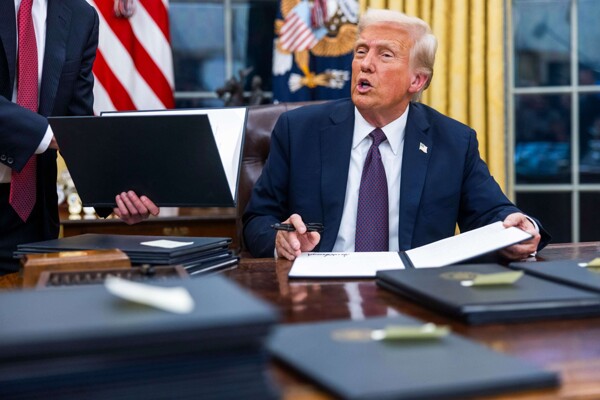
Amid the decline of the dollar, uncertainty in trade positions as well as the lack of clarity due to the unpredictability of President Donald Trump's tariff plans is causing financial markets to guess. Trump stated on Tuesday evening at the White House that his administration is discussing the introduction of a 10% tariff on imports from China starting February 1, the same day when he previously announced that Mexico and Canada would face tariffs of about 25%. Trump also promised tariffs on imported goods from Europe, not providing specifics at this time.
Despite these threats, the absence of concrete plans from Trump's side since the first day of his presidency led to the dollar starting the week down 1.2% against a basket of major currencies. "Overall, all this indicates that the U.S. dollar could continue to decline," noted Alvin Tan, head of Asian currency strategy at RBC Capital Markets. "The lack of a target-oriented attack on China is seen as a possible sign more cautious than the approach Trump mentioned during the pre-election campaign, which reduces the risks of inflation and possible harsh actions from the Federal Reserve," said Tony Sycamore, an analyst at IG.
"Traders are expecting a Federal Reserve rate cut at the quarter percentage point in July, while another cut at the end of the year is viewed as a possibility as well. Expectations are also rising concerning the fact that the Bank of Japan will raise its rate to a quarter percentage point on Friday, which will support the yen. The Chinese yuan remained at the level of 7.2735 per dollar in offshore trading after it reached its strongest level since December 11 at a mark of 7.2530. The dollar index, tracking the currency’s value against the euro, yuan, and four other major competitors, decreased by 0.14% to 108 as of 0054 GMT. The euro fell by 0.07% to $1.0420, while the yen slightly strengthened to 155.40 per dollar.
"The Canadian dollar fell primarily by 0.1% to C$1.4335 per greenback, following volatility last week, during which it dropped to C$1.4520 overnight for the first time since March 2020, driven by additional pressure from the inflation cooling in the previous month. The Mexican peso also fell by 0.1% to 20.6350 per dollar.
"Furthermore, there is a general feeling that Trump does not adhere to a maximalist trade protectionism in his actions at the initial stage; however, he seems to be striving for negotiations in trade," said Tan.














